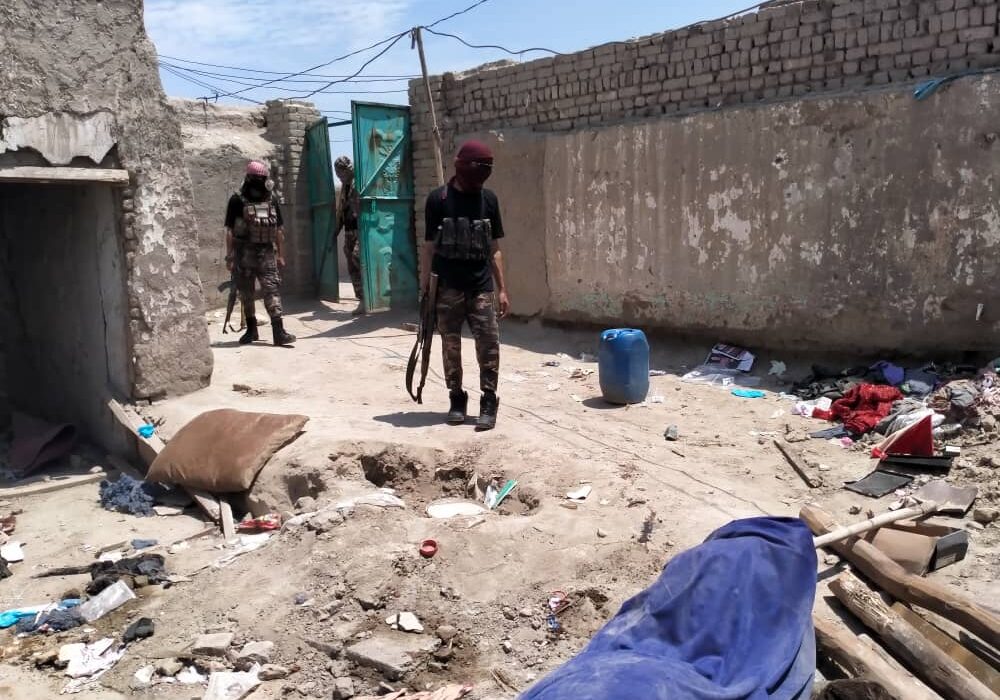Daesh using Afghanistan as a terror base, leaked Pentagon document reveals

Nearly two years after the US forces’ withdrawal from Afghanistan, the country has become a significant coordination site for Daesh (ISIS), from where the terrorist group plans attacks across Europe and Asia, and conducts “aspirational plotting” against the United States, according to a leaked classified Pentagon document that portrays the threat as a growing security concern, the Washington Post reported.
The attack planning, detailed in US intelligence findings leaked on the Discord messaging platform and obtained by The Washington Post, reveal specific efforts to target embassies, churches, business centers and the FIFA World Cup soccer tournament, which drew more than 2 million spectators last summer in Qatar. Pentagon officials were aware in December of nine such plots coordinated by Daesh leaders in Afghanistan, and the number rose to 15 by February, says the assessment, which has not been disclosed previously.
“ISIS has been developing a cost-effective model for external operations that relies on resources from outside Afghanistan, operatives in target countries, and extensive facilitation networks,” says the assessment, which is labeled top-secret and bears the logos of several Defense Department organizations. “The model will likely enable ISIS to overcome obstacles — such as competent security services — and reduce some plot timelines, minimizing disruption opportunities.”
The Afghanistan findings are one facet of a complex and evolving terrorist threat described in the leaked documents, now linked to a criminal case in which a member of the Massachusetts Air National Guard is accused of sharing classified information with friends online. Other reports in the same trove of documents reveal persistent efforts by the Islamic State (Daesh) in other parts of the world to obtain expertise for creating chemical weapons and operating drone aircraft, and a plot in which the group’s supporters would kidnap Iraqi diplomats in Belgium or France in a bid to secure the release of 4,000 imprisoned militants.
The documents will almost certainly be used as a political cudgel by congressional Republicans and others still seething about the Biden administration’s chaotic management of the US exit from Afghanistan in August 2021, the Post reported.
More than 120,000 people were evacuated in the process after the fall of Kabul. Tens of thousands of American allies were left behind, however, and the two-week operation saw horrific suffering. As the mission neared its end, a Daesh suicide bomber killed an estimated 170 Afghans along with 13 American troops before US drone operators, believing they had identified another would-be ISIS attacker, killed 10 civilians in a botched airstrike days later in the north of Kabul.
The Washington Post reports that Biden administration officials declined to verify the leaked documents’ authenticity, but defended their counterterrorism record since taking office.
Despite the ongoing efforts to acquire a weapon of mass destruction, the March 2023 document notes, encouragingly, that the terrorist group’s ambitions were severely undermined by the collapse of the caliphate.
The documents also detail Daesh responding to several recent world events, including consideration for sending a suicide bomber to Qatar to attack the World Cup tournament last year.
As a collection, the documents indicate that US intelligence agencies have succeeded repeatedly in intercepting the communications among Daesh cells. Such intercepts appear to have led to the disruption of plans for kidnappings and small-arms attacks on government buildings in Europe.
The documents also suggest that the al-Qaeda organization once headed by Osama bin Laden continues to decline. While the reports highlight the emerging threat from Daesh in Afghanistan, there is no mention of an al-Qaeda resurgence there, something many counterterrorism experts had feared would happen following the US withdrawal.
The group’s reclusive leader, Ayman al-Zawahiri, sought refuge in Kabul but was identified and targeted in a CIA-led operation that culminated in July 2022 in a lethal strike on an apartment where Zawahiri was staying in the Afghan capital in proximity to the former US Embassy.
Daesh activities in Afghanistan
An Amu finding shows that Taliban, despite its repeated denials of Daesh presence in the country, carried out eight operations against militants affiliated with Daesh’s Khorasan branch in a 23-day period from March 3 to March 26.
The operations were carried out in the capital city, Kabul, as well as in Herat, Balkh and Nimroz provinces.
The finding shows that Daesh carried out seven attacks against Taliban targets in the same period.
On March 9, a suicide bomber killed Mohammad Daud Muzammil, the Taliban’s governor for Balkh province, in Mazar-e-Sharif, the provincial capital. In a reprisal attack, the Taliban then claimed that they killed three key Daesh leaders – including Shadow governor for Khorasan Mawlawi Ziauddin; IS-K member Abu Omar Afridi; and a military trainer and bomb-making expert Salman Tajikistani – during a raid in Mazar-e-Sharif.
According to the CENTCOM commander, around 6,500 Daesh fighters are in Afghanistan of which 4,000 militants have been stationed across from the Tajikistan border.
On January 12, the Taliban defense ministry in a letter, a copy of which was seen by Amu TV, told the group’s border forces that around 7,000 Daesh members were expected to enter Afghanistan from Pakistan. According to the letter, these militants, led by a person named Muslim Kotwal, had received “extremist training” in the Korm area of Pakistan.
No comments:
Post a Comment